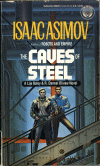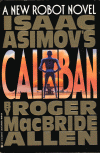This review for King’s Test will have a few spoilers for The Lost King. If you haven’t read The Lost King yet, stop now and check out that review, which is pretty much spoiler free.
I hope that if you’ve read my review of The Lost King and picked up the book, you heeded my advice by getting a copy of King’s Sacrifice before finishing. Margaret Weis begins the next book in this series by picking up immediately where she left off. The battle with the Corasian fleet (an alien race from another galaxy) is still raging on. The Phoenix, Sagan’s flagship (compare this to Vader’s Executor) has sustained heavy damage. Just before the battle, Lord Sagan entered into a temporary alliance with a group of mercenaries led by John Dixter to help face the Corasian invasion. Now that Sagan sees victory in sight, he’s ordered the crew of the Defiant to eliminate the mercenaries.
Dion has stolen Lord Sagan’s experimental Scimitar “space plane”* to try and save his friend General Dixter. (*Weis seems to make a point to refer to the ships as planes, maybe to set herself apart from typical science fiction terminology.) Dion doesn’t know it, but Sagan allowed him to steal the plane as part of a test, not of Dion, but that of God. Sagan is determined that Dion could not possibly succeed without God’s intervention. This makes sense, because Dion was just rescued after being captured by the Corasians. Dion didn’t fare so well in battle. One thing that I think Sagan has going for him is that his faith isn’t completely blind. In his opinion, if it is God’s will for Dion to rule as King, then God will ensure Dion’s survival.
Sagan explains this plan to Maigrey, the only other surviving Guardian. She was one of the only surviving Gurardians that refused to join Sagan in is coup to remove the last king in the line of the Blood Royal. Their relationship is rather complicated. As children, they discovered they were mind-linked, a rare phenomenon that occurred only between very few of the Blood Royal. She was Sagan’s second in command. It was somehow broken when Sagan struck down Maigrey in the king’s palace.
Following Sagan killing Platus, the Guardian responsible for hiding and raising Dion, the mind link with Maigrey was somehow reforged. Sagan tracked Maigrey down and brought her aboard the Phoenix to be executed for her betrayal the night of the coup. She challenged him to a bloodsword duel that Sagan could not refuse without losing the respect of his men. It was during the peak of this duel that Sagain and Maigrey both were mentally assaulted with a painful shared premonition of the coming Corasian attack. I was a bit thrown off by how quick they were to stop the fight and agreed to take on the Corasians together.
Dion’s true test, owning up to the title of the book, comes much later. Weis broke this book up into five sections, the previous book only had two. The third part chronicles “The Betrayal,” which I was glad to see finally explained. There is a lot of character development for Sagan and also some more background on the reasoning behind the coup. Weis also introduces a new villain, the last of the Order of Dark Lightning, capable of mind control. This new guy reminded me a little of Darth Sidious, however he is more comfortable hiding in the shadows.
Overall, The Lost King is a solid sequel. It is at least as good or better than the first book. There is quite a bit more character development for Dion, Sagan, and Maigrey. My favorite character so far is XJ, Tusk’s eccentric and obnoxious flight computer. One thing I’d like to point out about these books so far is that the chapters are relatively short and to the point. I normally read on my lunch break and really hate having to cut a chapter short. I found that I could easily find a stopping point when I wanted.

